Subphylum Vertebrata Family Crocodylidae Rank Species | Phylum Chordata Subfamily Crocodylinae | |
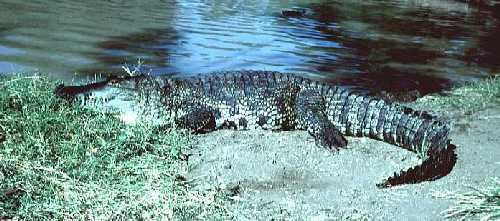 | ||
Similar Crocodylus, Crocodiles, Crocodile, Reptile, American crocodile | ||
Morelet s crocodile and the ccsb reptile rescue at repticon raleigh
Morelet's crocodile (Crocodylus moreletii), also known as the Mexican crocodile, is a modest sized crocodilian found only in fresh waters of the Atlantic regions of Mexico, Belize and Guatemala. It usually grows to about 3 metres (9.8 ft) in length. It is a Least Concern species.
Contents
- Morelet s crocodile and the ccsb reptile rescue at repticon raleigh
- Morelet s crocodile oceanarium 20th october 2014
- Taxonomy and etymology
- Characteristics
- Size
- Distribution and habitat
- Hunting and diet
- Reproduction
- Conservation
- References
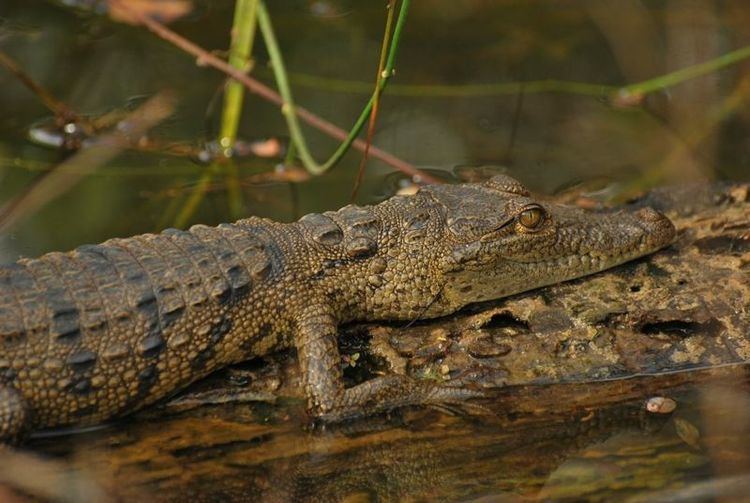
Morelet s crocodile oceanarium 20th october 2014
Taxonomy and etymology
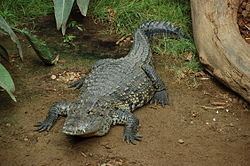
Morelet's crocodile was discovered in Mexico in 1850 and named after the French naturalist who made the discovery, Pierre Marie Arthur Morelet (1809–1892). It was long confused with the American and Cuban crocodiles because of similar characteristics and an ambiguous type locality. It was not generally accepted as a separate species until the 1920s.
Characteristics
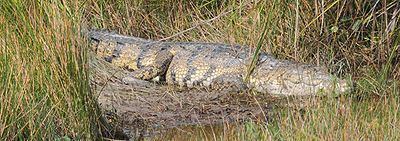
Morelet's crocodile has a very broad snout with 66 to 68 teeth when they are fully mature. They are dark grayish-brown in color with dark bands and spots on the body and the tail. This is similar to other crocodiles, like the American crocodile, but the Morelet is somewhat darker. Juvenile crocodiles are bright yellow with some dark bands. The crocodile’s iris is silvery brown. They have four short legs, giving them a rather sprawling gait, and a long tail, which is used for swimming. The hind feet of the crocodiles are webbed. They have very explosive capabilities because of their strong muscles and are fast runners.
Size
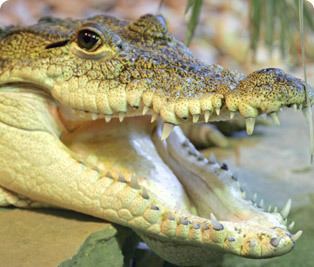
Morelet’s crocodile is small compared to most other crocodiles. The males can become larger than the females. The average adult Morelet's crocodile is about 2.1 m (6.9 ft), with a typical length range of 1.5 to 2.7 m (4.9 to 8.9 ft) (the lower measurement representing the mean total length of a female at sexual maturity which is attained at roughly 7–8 years of age in the wild). Almost all crocodiles in excess of 2.5 m (8.2 ft) are males and at this advanced stage of maturity, the male goes through a significant change in skull osteological morphology as the skull appears to increase in broadness and robustness. Large adult males can attain a length of 3 m (9.8 ft), anything in excess of this is considered exceptionally rare for this species however the species has a maximum reported length of 4.5 m (15 ft), with two other outsized specimens reportedly measuring 4.1 and 4.3 m (13 and 14 ft), respectively. Body mass in this species is often around 38–58 kg (84–128 lb), however this may include possibly overweight captive specimen and average adult body mass in wild adults from Belize was posited as approximately 27.7 kg (61 lb). The weight of a large 3 m (9.8 ft) wild male crocodile is estimated to average 83.9 kg (185 lb) in although mass is likely much more in outsized individuals. Overall, this species is similar in appearance and morphology to the Cuban and the larger American crocodiles in appearance.
Distribution and habitat
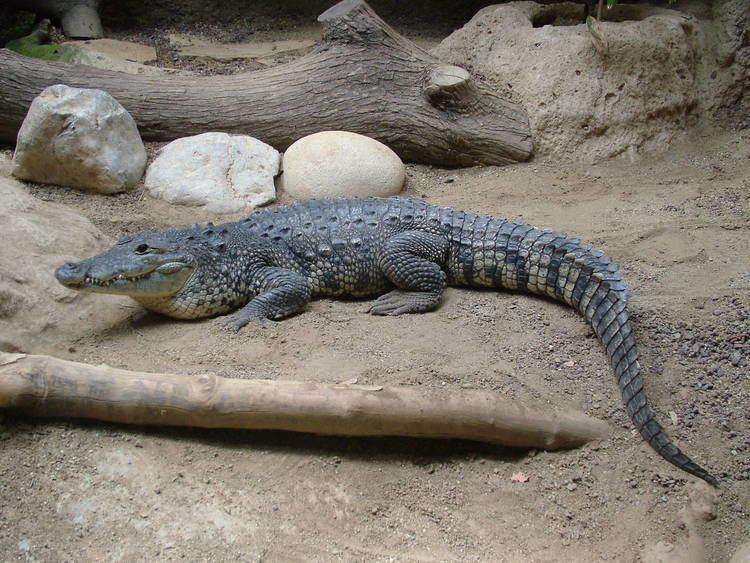
Morelet's crocodile can be found in freshwater habitats in Central America and along the Gulf of Mexico stretching through Belize, Guatemala, and to Mexico. The Belizean pine forests are an example of the type of ecoregion in which they occur. In their freshwater habitats, they prefer isolated areas that are secluded. This species of crocodile can mainly be found in freshwater swamps and marshes, which are located inland, and in large rivers and lakes. Both of these habitats are forested to help add cover.
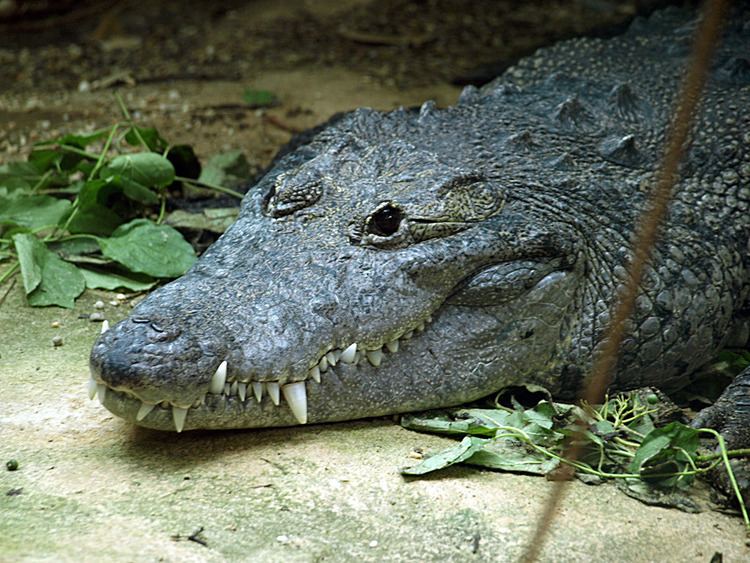
The Morelet can also be found along the coast in brackish waters and the grassy savannas on the Yucatán Peninsula. These crocodiles become much more distributed during the rainy seasons when flooding occurs and it is easier for them to move elsewhere.
Juvenile crocodiles live in very dense cover to protect them from other predators that might be in the area and will remain there until they become older and able to fend for themselves. Adult crocodiles are known to dig out burrows during dry seasons in their area. The range of this crocodile can overlap with the American crocodile, which can sometimes lead to them being confused with one another.
Recently, the Morelet's crocodile has been introduced into the Rio Grande (Rio Bravo in Mexico). Several newspaper outlets on the Mexican side of the border report of reptiles inhabiting the river appearing not to be the American alligator which is native to Texas, but the Morelet's crocodile which is native to Tamaulipas from San Fernando southward. Crocodiles have been seen in the cities of Matamoros, Reynosa and as far north as Nuevo Laredo. The sightings have prompted several municipal police departments to put up signs warning people about entering the river.
Hunting and diet
Like most crocodilians, Morelet's crocodiles are highly opportunistic and will prey on practically anything that they can overpower that comes in their territories. Juvenile crocodiles feed largely on fish and insects until they become bigger and more capable of bringing down larger prey. Adults largely prey on small mammals, birds, and other reptiles as well as gastropods, crustaceans and other invertebrates. These small mammals can include domesticated animals like cats and dogs. Large specimens have been shown to be able to overtake large prey. Dogs and goats have been taken by this species, including a record of a 2.9 m (9.5 ft) adult killing an English sheepdog which weighed at least 35 kg (77 lb). Adults have also been recorded eating even larger animals, including adult and nearly-grown cattle and an adult tapir, although these have been cases of scavenging on caracasses, with the tapir having been killed by a jaguar (it is possible that the jaguar was present when the crocodile fed). Crocodiles have been known to be cannibalistic towards smaller specimens. Although previously thought to be inoffensive, there have been recent reports that the species has attacked humans on multiple occasions and at least four documented human fatalities have occurred. Despite the relatively small size of the species, large adult Morelet's are aggressive and easily capable of overpowering an unaware human near the water. Due to partial consumption, recorded fatal attacks are likely predatory rather than defensive in nature.
Reproduction
Breeding usually takes place between April and June and the eggs or laid before the start of the rainy season. Morelet's crocodiles are unique among North American crocodiles in that they build mound nests only, and not mound and hole nests. These mound nests are about 3 m (9.8 ft) wide and 1 m (3.3 ft) high and can be found near the water or on floating vegetation. A female crocodile can lay between 20 and 45 eggs and nests have been found containing eggs from more than one female. The eggs are buried and the nests are guarded by females. The eggs usually hatch after 80 days of incubation and hatchlings are normally about 17 cm (6.7 in) long. After the eggs have hatched the female crocodile will carry her young to the water where they are protected by both parents and will later leave them to fend for themselves. Females are highly protective of their young and have reportedly been observed to aggressively displace intruders and humans if distress calls of the baby crocodiles are heard and even father crocodiles have been observed to spring to the defense of young crocodiles. In captivity, juvenile crocodiles are treated aggressively by adult crocodiles but never hatchlings.
Conservation
Morelet's crocodile has long been threatened by habitat destruction and illegal hunting. Both of these factors have significantly lowered their populations. It was hunted for its hide during the 1940s and 1950s because high quality leather can be made from their skins. Crocodile leather can be used to make wallets, coats and shoes.
One of the key protectors of crocodiles today is the CSG, or Crocodile Specialist Group, started in 1971. This is a worldwide organization of biologist and other professions coming together to conserve the 23 species of alligators and crocodiles. The CSG monitors all trading of crocodile skins and helps determine if the skins are legal or were illegally taken. When this organization started, all of the crocodilian species were either threatened or endangered. Today, those numbers have greatly changed.
“By 1996 one third of the crocodilian species were abundant enough to support regulated annual harvests, another third were no longer in danger of extinction, but the final one third of the species still remain endangered.”
